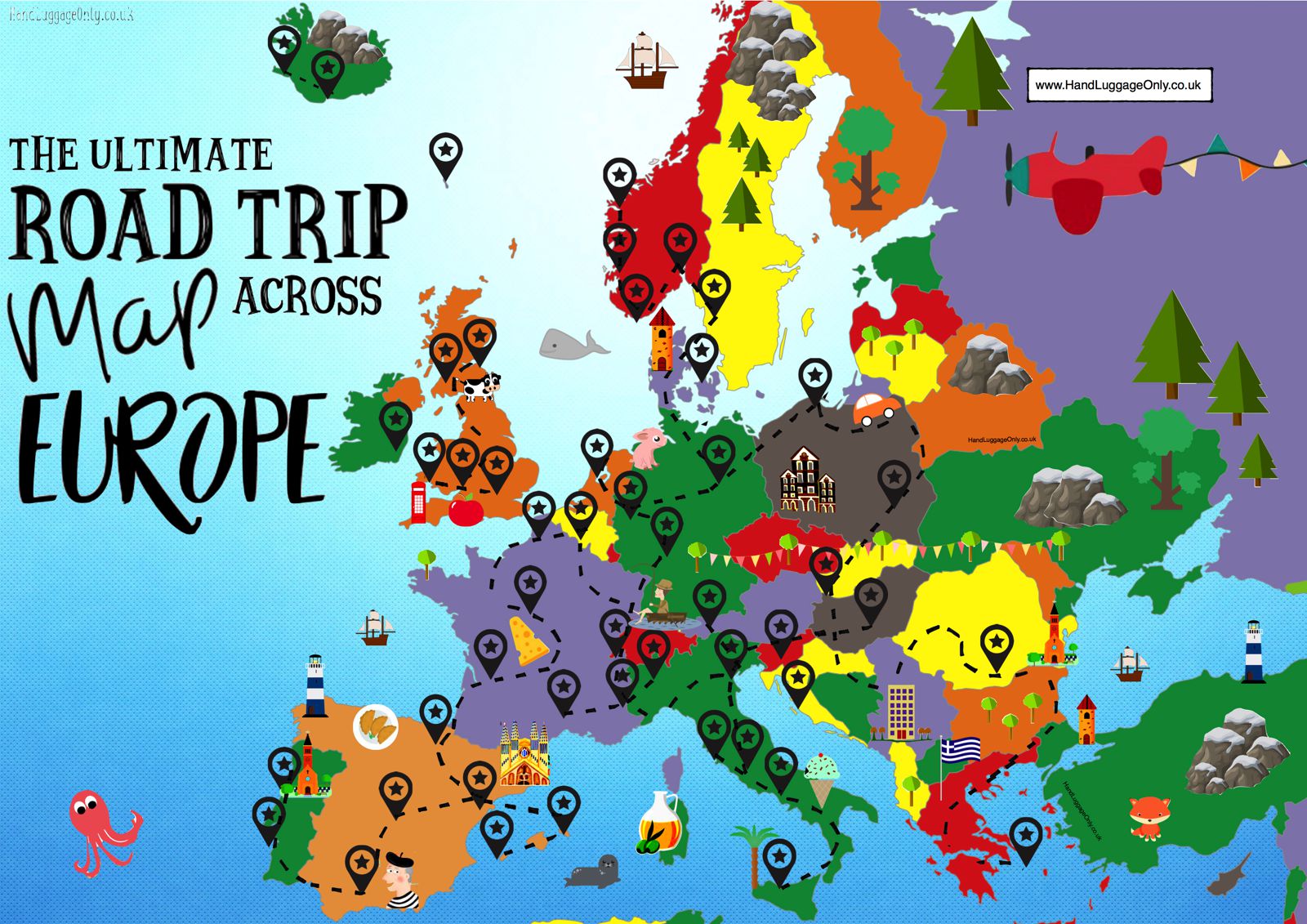Senior Trips to Europe: Embark on a journey tailored for the discerning traveler seeking enriching cultural experiences and comfortable exploration. This guide delves into the myriad possibilities available to senior citizens planning a European adventure, covering everything from selecting the perfect destination and trip type to budgeting, health considerations, and crafting unforgettable itineraries. Whether you envision a relaxing river cruise, a meticulously planned escorted tour, or an independent exploration of charming European cities, we provide the essential information to make your dream trip a reality.
We explore diverse travel styles, catering to various fitness levels and preferences. Discover accessible cities, senior-friendly accommodations, and practical advice on navigating travel logistics, ensuring a stress-free and enjoyable experience. Learn how to create a personalized itinerary, factoring in cultural immersion, historical sites, and relaxation, all while adhering to a manageable budget.
Types of Senior Trips to Europe
Planning a senior trip to Europe offers a wealth of options, each catering to different preferences and physical capabilities. Choosing the right type of trip is crucial for ensuring a comfortable, enjoyable, and memorable experience. Consider factors like desired pace, level of independence, and preferred social interaction when making your decision.
River Cruises
River cruises provide a relaxing and scenic way to explore Europe’s waterways. The pace is generally slow and leisurely, with minimal physical exertion required. Most activities are onboard or involve short, guided excursions. Meals and entertainment are usually included, and onboard amenities cater to older travelers’ needs. However, river cruises may lack the flexibility of other trip types, and destinations are limited to areas accessible by river. They also tend to be more expensive than other options.
- Pros: Relaxed pace, minimal physical exertion, all-inclusive amenities, onboard entertainment, guided excursions.
- Cons: Limited flexibility, higher cost, destinations restricted to navigable waterways.
Escorted Tours
Escorted tours offer a structured itinerary with pre-arranged transportation, accommodation, and guided sightseeing. These tours often cater specifically to senior travelers, offering a comfortable pace and assistance with luggage and other logistical aspects. The level of social interaction is high, as travelers spend considerable time together. However, escorted tours can feel rushed at times, and the itinerary may not allow for much independent exploration.
- Pros: Organized itinerary, pre-arranged transportation and accommodation, guided sightseeing, high level of social interaction, assistance with logistics.
- Cons: Less flexibility, potential for rushed schedule, limited opportunities for independent exploration.
Independent Travel
Independent travel offers the greatest flexibility and freedom. Senior travelers can customize their itinerary, choose their pace, and explore destinations at their own leisure. This option allows for deeper immersion in local culture and a more personalized experience. However, it requires more planning and organization, and may involve more physical exertion depending on the chosen activities. It also necessitates a higher degree of self-reliance.
- Pros: Maximum flexibility, personalized itinerary, deeper cultural immersion, potential for cost savings.
- Cons: Requires more planning and organization, potentially more physical exertion, higher degree of self-reliance.
Small Group Tours
Small group tours combine the benefits of escorted tours with a more intimate and personalized experience. The smaller group size allows for more interaction with the guide and fellow travelers, and offers a more relaxed pace than larger tours. These tours often cater to specific interests, such as history, art, or food, providing a more focused and enriching experience. However, the cost may be slightly higher than larger group tours, and availability may be limited.
- Pros: Intimate group size, personalized attention, focused itineraries, relaxed pace, high level of social interaction.
- Cons: Higher cost than large group tours, limited availability.
Health and Safety Considerations for Senior Travelers
Planning a European adventure as a senior traveler requires careful consideration of health and safety. A proactive approach ensures a smoother, more enjoyable trip, allowing you to focus on the sights, sounds, and experiences Europe has to offer. This section outlines crucial steps to take before, during, and after your journey to maximize your well-being and minimize potential risks.
Pre-Trip Medical Preparations
Before embarking on your European journey, a comprehensive medical checkup is highly recommended. This allows your physician to assess your current health status, address any pre-existing conditions, and provide necessary vaccinations or preventative medications. Discuss any potential health concerns, such as heart conditions, respiratory issues, or allergies, with your doctor to obtain appropriate advice and prescriptions. Ensure you have a sufficient supply of any regularly prescribed medications, carrying them in their original containers with clear labeling. Consider obtaining a letter from your physician detailing your medical conditions and prescribed medications, translated into the languages of the countries you’ll be visiting. This documentation can prove invaluable in emergency situations.
Essential Items for a Senior Traveler’s First-Aid Kit
A well-stocked first-aid kit is crucial for managing minor ailments and emergencies while traveling. The following items should be included:
- Pain relievers (ibuprofen, acetaminophen)
- Antihistamines (for allergies)
- Anti-diarrheal medication
- Motion sickness medication
- Band-aids and antiseptic wipes
- Prescription medications (with a copy of the prescription)
- Thermometer
- Personal medications (e.g., inhaler, nitroglycerin)
It is also advisable to include any personal medical devices, such as a CPAP machine or insulin pump, along with sufficient supplies and any necessary accessories.
Staying Safe and Healthy While Traveling in Europe
Maintaining good health and safety while traveling in Europe involves being mindful of your surroundings and taking proactive steps. Food safety is paramount; stick to reputable restaurants and avoid consuming uncooked or undercooked foods. Stay hydrated by drinking bottled water and be cautious of tap water, especially in less developed areas. Familiarize yourself with local emergency numbers and have a plan in place for contacting your family or emergency services in case of need. Be aware of common scams targeting tourists and avoid carrying large amounts of cash. Use reputable transportation options and be vigilant about your belongings in crowded areas. If you experience any health issues, seek medical attention promptly. Many European countries have excellent healthcare systems, but it’s wise to have travel insurance that covers medical emergencies and evacuations.
Illustrative Examples of Senior-Friendly European Itineraries
Choosing the right itinerary is crucial for a successful and enjoyable senior trip to Europe. Careful consideration of pace, accessibility, and interests ensures a memorable experience without undue strain. The following examples illustrate how to tailor a trip to suit the needs and preferences of older travelers.
Ten-Day Italian History and Art Itinerary
This itinerary focuses on Rome and Florence, two cities rich in history and art, while maintaining a relaxed pace suitable for seniors. Transportation utilizes a combination of comfortable train travel and local taxis or private car services where appropriate, minimizing walking distances and physical exertion.
Day 1-3: Rome
Arrive in Rome, check into a centrally located hotel. Spend the first day acclimating and enjoying a leisurely lunch. Days 2 and 3 focus on major historical sites: the Colosseum and Roman Forum (consider a guided tour with minimal walking), the Pantheon (easily accessible), and the Vatican City (St. Peter’s Basilica and the Vatican Museums – pre-booked tickets and perhaps a wheelchair or assisted tour are recommended to manage crowds and distances). Evenings can be spent enjoying traditional Roman cuisine at local trattorias.
Day 4-6: Florence
Take a high-speed train to Florence. Check into your hotel and enjoy a relaxing afternoon. Days 5 and 6 are dedicated to Florence’s artistic treasures: the Uffizi Gallery (pre-booked tickets and perhaps a guided tour are essential), the Accademia Gallery (to see Michelangelo’s David – again, pre-booking and managing crowds is important), and the Ponte Vecchio. Consider shorter walking routes and utilizing taxis or ride-sharing services for longer distances. Enjoy the beautiful scenery and delicious Tuscan food.
Day 7-10: Return and Relaxation
Day 7 allows for a slower pace, perhaps revisiting a favorite spot or enjoying a cooking class. Days 8 and 9 could involve a day trip to a nearby town like Siena or a relaxing afternoon in a Florentine park. Day 10 is for departure from Florence.
Seven-Day Rhine River Cruise
This itinerary highlights the relaxing aspects of a river cruise, with ample time for onboard amenities and leisurely shore excursions. The cruise itself minimizes physical exertion, while offering opportunities to explore charming towns and picturesque landscapes at a comfortable pace.
Day 1-7: Rhine River Cruise
Embark on a Rhine River cruise in Amsterdam or another starting point. The daily itinerary will typically include onboard activities such as lectures, live music, and perhaps cooking demonstrations. Shore excursions at various ports of call (e.g., Cologne, Rüdesheim, Heidelberg) are offered, catering to different interests and fitness levels. These excursions may involve walking tours, but often offer options for alternative transportation, like buses or small boats. The ship itself offers a variety of amenities, including restaurants, bars, and lounges, promoting relaxation and socializing. Days at sea allow for relaxation and enjoying the scenery from the ship’s deck.
Wrap-Up
Planning a senior trip to Europe is an exciting endeavor, filled with the promise of new discoveries and cherished memories. By carefully considering your preferences, physical capabilities, and budget, you can curate a trip that perfectly balances cultural exploration with comfort and ease. This guide serves as your companion, providing the knowledge and resources to plan a seamless and unforgettable European adventure. Embrace the opportunity to explore the rich tapestry of European history, culture, and beauty, knowing you’ve taken the necessary steps to ensure a safe, enjoyable, and rewarding journey.




